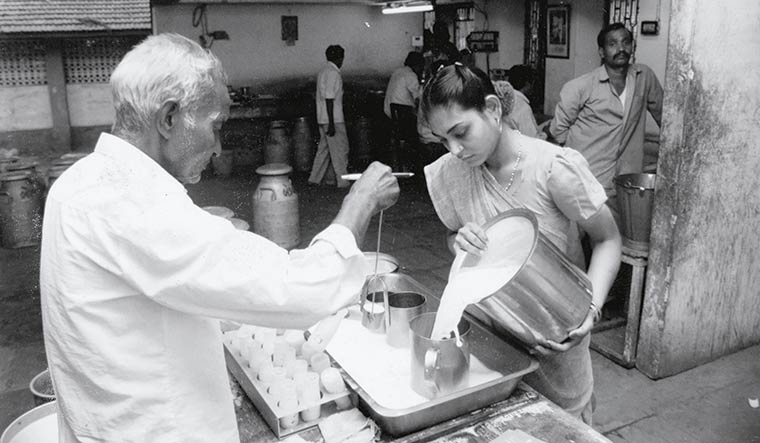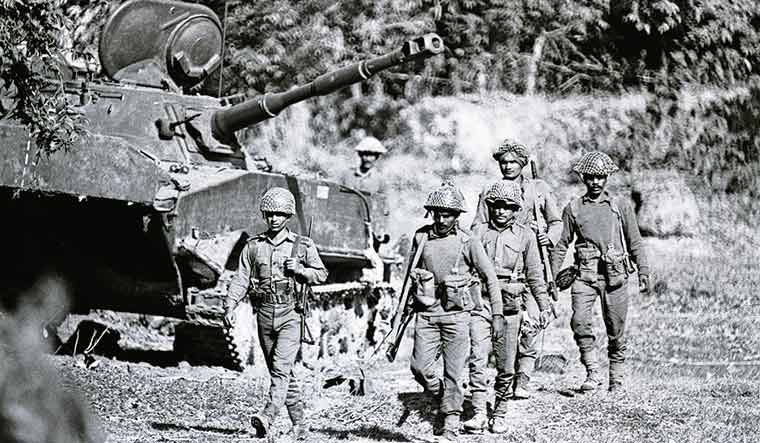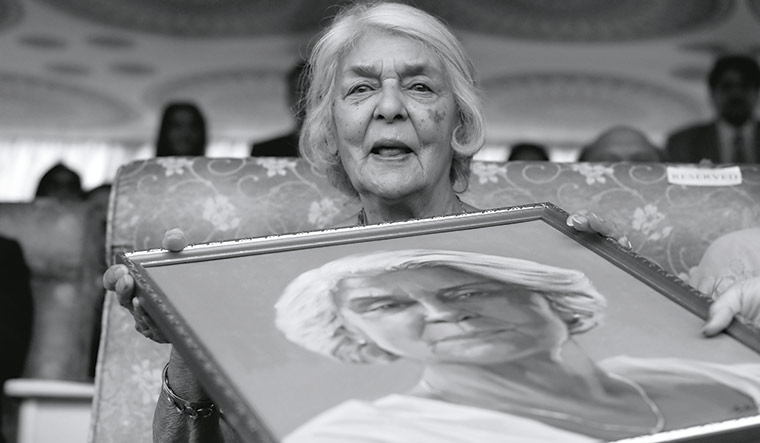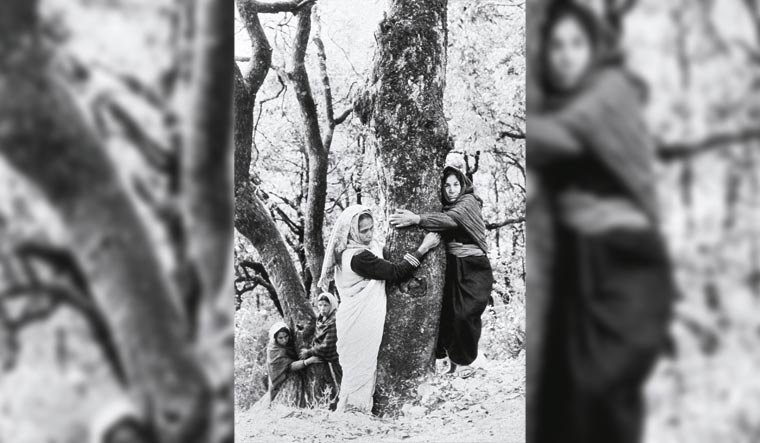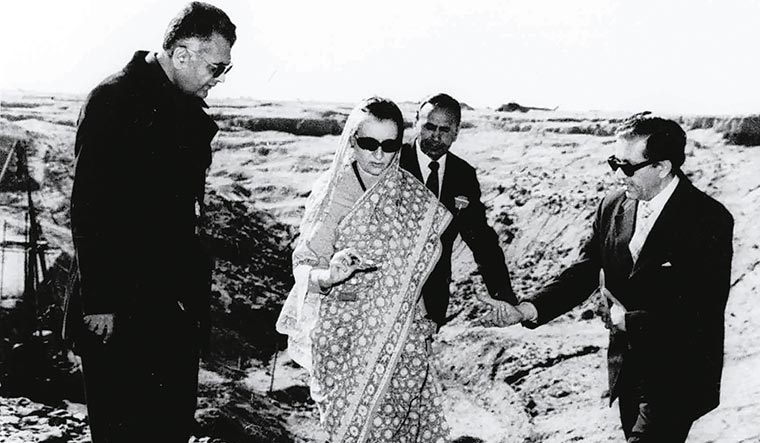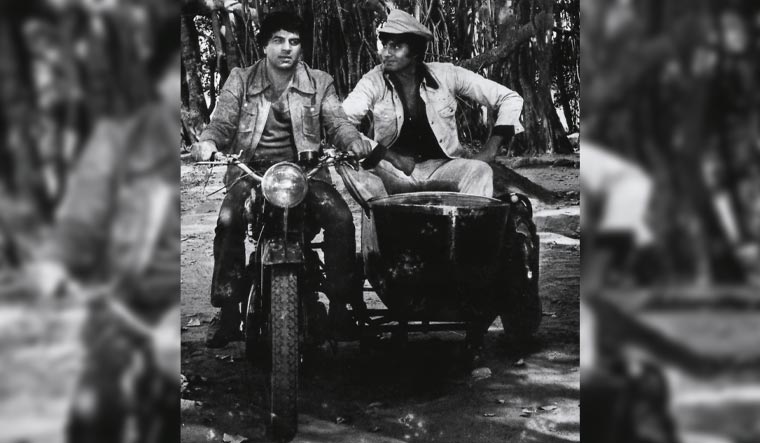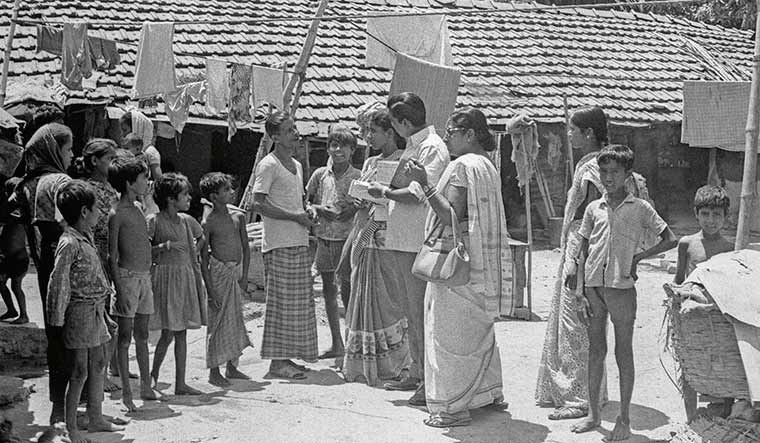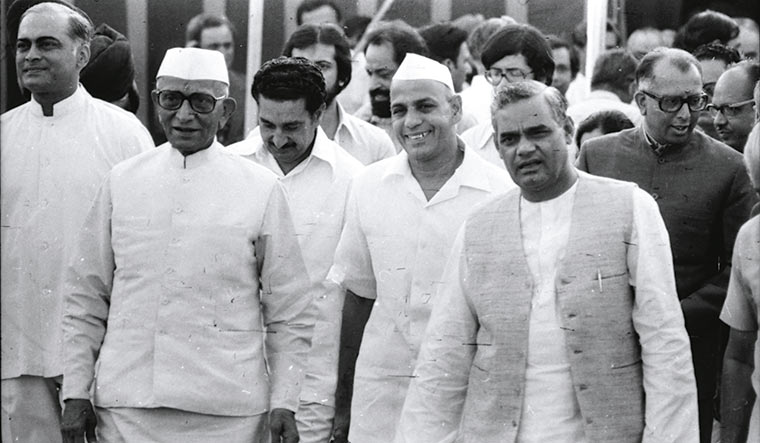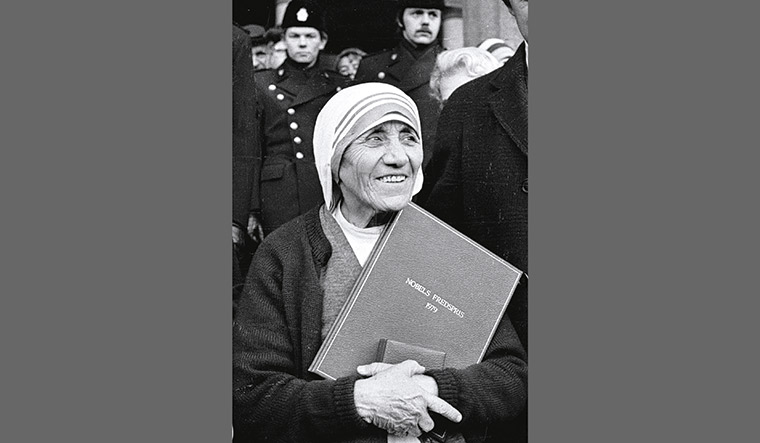This is a decade of two parts.
The first is bathed in glory. Having come of age, India gifts herself a silver jubilee present—the trifecta of clinching a decisive war victory over Pakistan, liberating Bangladesh and changing the shape of the subcontinent. The first nuclear test in Pokhran in Rajasthan stuns the world. A Nuclear Suppliers Group is hurriedly assembled in London to keep the new kid out of the old boys’ club.
The mood is upbeat, the statements are loud. It is the time of big buckles and bell bottoms, of psychedelic prints and maxi dresses.
Then comes the dark half of the decade. Indira Gandhi declares national emergency, snatching away freedoms that were won at a heavy price. Dissent is crushed, midnight arrests become the norm, and men are forcibly sterilised. In 1976 alone, 6.2 million Indians undergo vasectomy.
There are attempts to sterilise thoughts as well. Film director Ramesh Sippy is told to change the ending of Sholay. The dacoit Gabbar Singh, formerly a victim of vigilante justice, is resuscitated and lawfully handed over to the police. Happily, the dying embers of Indian democracy, too, slowly flicker back to life, as India gets its first non-Congress government at the Centre after 21 months of the Emergency.
High drama dominates the box office and the ballot box.
1970
A dairy cooperative in Bedwa, Haryana.
Villages usher in India’s white revolution, ending milk deficiency and multiplying the country’s dairy output. Under Verghese Kurien, head of the National Dairy Development Board, ‘Operation Flood’ improves livelihoods and makes India the largest milk producer in the world.
1971
Indian troops at Khulna in Bangladesh on December 16, the day the country was liberated from Pakistan. The comprehensive victory over Pakistan in the 1971 war redraws the map of the subcontinent | Getty Images
1972
A constitutional amendment ends “privy purses”— allowances from the Union government to erstwhile rulers of princely states. It marks a clean break from the era of maharajas, although royal families continue to use formal titles in their erstwhile domains, but without any official recognition or privilege. Some of the royals retain their aura, like Gayatri Devi of Jaipur (above), three-time MP and prominent Indira critic.
1973
To prevent rampant deforestation by loggers, villagers in Garhwal (now part of Uttarakhand), embrace trees. Thus begins the Chipko movement, a mass protest led by activist Sundarlal Bahuguna that spawns environment conservation efforts across India | Getty Images
1974
India’s first nuclear test, in Pokhran, Rajasthan. ‘Operation Smiling Buddha’ makes India the first country apart from the five permanent members of the UN Security Council to have developed the N-bomb. India’s nuclear ambitions worry the west, but the country will gradually be acknowledged as a responsible power.
(Above) Indira Gandhi, flanked by energy minister K.C. Pant (to her right) and Atomic Energy Commission chairman H.N. Sethna, at the site of the test | AP
1975
A packed year. Sikkim joins the Union of India. Two months later in June, prime minister Indira Gandhi declares a national emergency amid political turmoil.
Weeks after the Emergency is imposed, Sholay is released. A desi take on the Wild West action flicks, Sholay is a massive success, thanks to its racy narrative, memorable screenplay, and sizzling chemistry between the leads. Its dialogues enter everyday parlance.
1976
The Emergency, declared a year earlier, becomes a civil liberties nightmare. Sanjay Gandhi, MP, leads a forced sterilisation drive. The Gangetic plains come to be known as vasectomy belt. India’s population, however, continues to rise. (Above) Officials visit a Calcutta slum as part of the sterilisation campaign in April | Getty Images
1977
The Emergency comes to an end, and Indira gets routed at the hustings. The Janata Party forms India’s first non-Congress government, led by prime minister Morarji Desai (second from left).
Atal Bihari Vajpayee (far right), his external affairs minister, will become the first non-Congress prime minister to serve a full term | Getty Images
1978
Two months after Louise Brown of the UK becomes the first human born through in vitro fertilisation, India has her first IVF baby—Durga, aka Kanupriya Agarwal. Durga grows up and leads a normal life in Pune, but the doctor who helped create her, Subhash Mukherjee (above), meets a tragic fate. He is harassed by the government and his research is neglected. He kills himself after three years.
India goes on to become a hub of infertility treatment.
1979
Mother Teresa is awarded the Nobel Peace Prize, “for work undertaken in the struggle to overcome poverty and distress, which also constitutes a threat to peace”. She receives the prize in Oslo in December.
Nineteen years after her death, the Catholic Church in 2016 declares her a saint. The Missionaries of Charity, which she founded, continues to serve the poor in India | AFP



